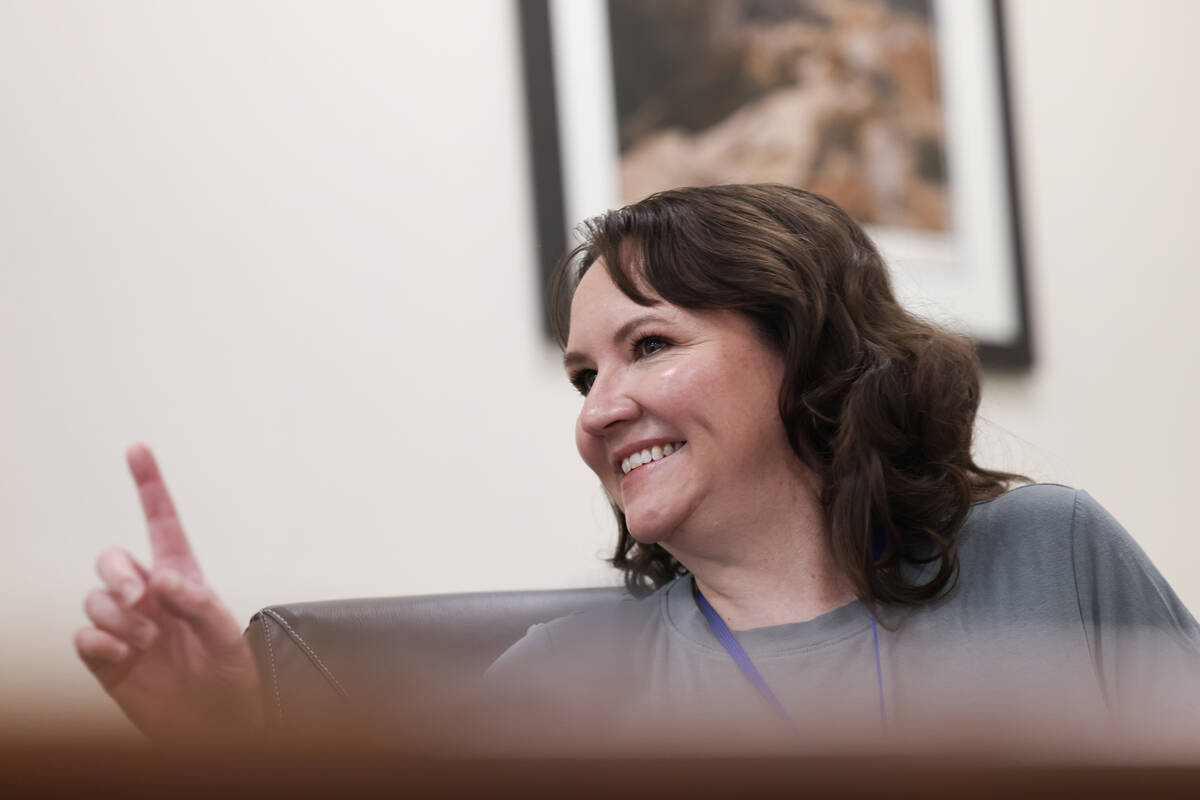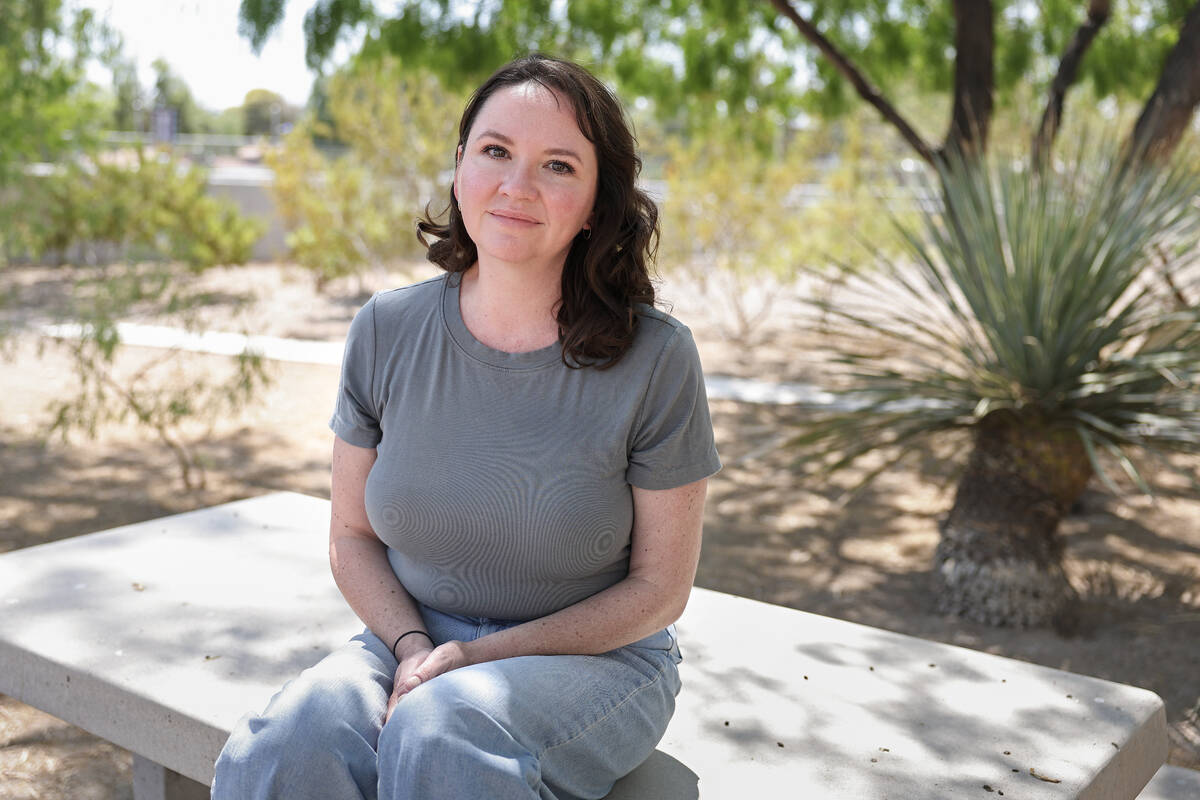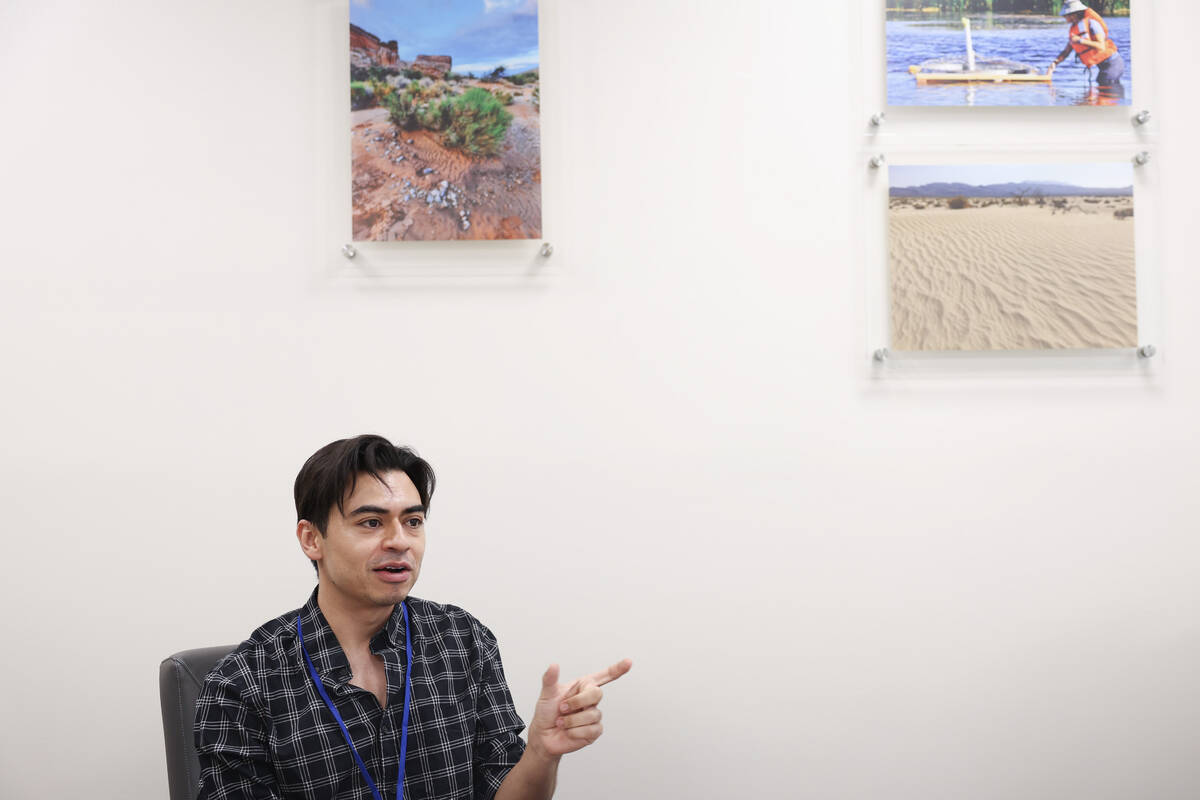‘We’re 10 to 15 years behind’: The Nevada Heat Lab is working to save your life
Yes, Southern Nevada’s desert climate has always been hot enough to kill.
But until Ariel Choinard and her Nevada Heat Lab brought urban heat to the forefront of hard policy discussions, Las Vegas was behind other cities that were proactively preventing heat-related deaths and emergency room visits.
“It didn’t start being hot when the heat lab started our work,” said Choinard, the lab’s lead. “There’s a question of, what was our capacity and ability to start addressing this issue before it became so pressing? In some ways, we’re 10 to 15 years behind.”
In a matter of two years, Choinard, 42, has emerged as the face of the urban heat issue in Southern Nevada in local and national media.
She was named coordinator of the Nevada Heat Lab in 2023 when the Desert Research Institute leveraged federal funds to create the research initiative. It was originally called the Southern Nevada Heat Resilience Lab, rebranded this year to encourage more statewide participation.
Her lab hosts virtual debriefings with municipal governments, nonprofits and other agencies after extreme weather events in the summer. She now leads a team of three: David Almanza, who grew up in Las Vegas, is the lab’s postdoctoral researcher, and Cayenne Engel is a staff research scientist who focuses on expanding the region’s urban tree cover.
Together, they have been Southern Nevada’s acting emergency managers, spurring debate about how the state can make cooling stations more effective and expanding heat response beyond them. In a region that lost 527 people to heat last year and a state that is home to the nation’s two fastest-warming cities, it’s high time for proactivity, Choinard said.
Related: Cooling stations can prevent heat-related deaths. But do Las Vegans use them?
“We’re here to provide unbiased, scientific research and information for the decision-makers who need it,” Choinard said. “Building relationships and maintaining them have been a big piece of the work. But occupying that kind of quasi-emergency response space is a really challenging task for researchers, who are definitely not emergency managers.”
Extreme heat inherently inequitable
Cooling stations, activated only when the National Weather Service issues an extreme heat warning, are largely the extent of near-term heat response in Las Vegas. But they have their limitations, such as a lack of community visibility, as shown in a survey the lab conducted last summer.
Before pioneering the lab, Choinard was Clark County’s first-ever urban heat resilience fellow and successfully convinced regional library systems to agree to open their doors as community cooling stations.
Prior to that, during a graduate program at Antioch University in Culver City, California, Choinard worked with the Los Angeles Mayor’s Office of Resilience, now the Climate Emergency Mobilization Office. It was there that she got to see what worked about cooling stations — and what didn’t.
And like in Los Angeles, the burden of extreme heat isn’t equally distributed across Southern Nevada, said Almanza, the postdoctoral researcher.
A 2021 study from the Regional Transportation Commission of Southern Nevada was one of the first looks at so-called “urban heat islands,” or pockets where a lack of greenery and an abundance of pavement elevate temperatures. Volunteer citizen scientists produced a similar map in 2022, as a part of a National Oceanic and Atmospheric Administration heat mapping campaign.
Still, heat doesn’t discriminate, Almanza said, and everyday residents are not taking heat as seriously as they should.
“It becomes a part of your city identity — a true Nevadan or Las Vegan will have that resilience to heat, because we grew up here,” Almanza said. “But every human body has limits. It would be nice to see that shift of identity go to where being a Nevadan means to care for my well-being, my neighbor’s well-being and the safety of our community.”
Funding remains persistent challenge
The lab’s consistent meetings inspired a joint Southern Nevada Health District and RTC effort to distribute 4,000 bus passes to people who need transportation to cooling centers.
However, the $8,000 it took to fund that program is a rarity, said Jeff Quinn, the health district’s public health preparedness manager who attends heat lab meetings. It took some money from Clark County, as well, when the Nevada Heat Lab recommended that cooling stations be stocked with water and have visible, identifying signage.
“Everything comes down to the funding, and whether people have the resources,” Quinn said.
One measure Quinn is exploring is modeled after the city of Phoenix, where volunteer emergency medical staff are available to help people at cooling centers experiencing heatstroke. That initiative will be piloted next summer, Quinn said.
Choinard’s lab is federally funded under the National Oceanic and Atmospheric Administration. Though no cuts have been made to its funding, relying on federal grants is increasingly difficult under the Trump administration, which has placed a microscope on the nation’s spending and debt.
Spotted urban heat planning and a lack of reliable funding could be addressed by a bill that Assemblymember Cinthia Moore, D-North Las Vegas, said she plans to introduce in 2027.
Moore said she first interacted with Choinard’s lab in the meetings she attended as the then-coordinator of the Nevada Environmental Justice Coalition, a group of organizations invested in climate action.
To take the emergency management responsibility away from Choinard’s team, Moore seeks to create a statewide office to address extreme heat, performing a similar function to the Arizona Department of Health Services’ chief heat officer, who was appointed in 2024.
For Moore, the issue of extreme heat is personal. She represents the east side where she grew up, a part of town where many neighborhoods qualify as urban heat islands.
“If we have a more coordinated effort, we can work together to figure out if it’s funding from the state that needs to be allocated to help the municipalities, or if we need to require the municipalities to set money aside,” Moore said.
On the federal level, a legislative push from U.S. Sen. Jacky Rosen, D-Nev., could free up Federal Emergency Management Agency funding for urban heat by reclassifying heat as a weather disaster, Moore said.
A hotter future
With a spike in interest and increased attention after Las Vegas hit 120 degrees last year, Nevada has had some wins.
The state is enforcing a new regulation to protect workers from the heat this summer, plans are underway to plant tens of thousands of trees to alleviate heat islands, and the Clark County coroner’s office continues to refine its protocols for more precise accounting of heat-related deaths.
Deb Reardon, a regional planning manager at the RTC, said the heat lab meetings have helped her agency create a transportation resilience improvement plan that will be completed early next year. A shade analysis will identify areas where more protection is needed for transit riders.
The 2021 RTC study has been useful to direct tree planting in the region, she said, and it has been used in different agencies’ federal grant applications. She said many discussions have centered around how an extreme heat office could help alleviate the role of the heat lab, however.
“The heat lab has been a really strong partner,” Reardon said. “It’s also rewarding as a planner to see products that we produce being used in the community and taking on a life of their own.”
In the absence of a statewide or regional heat planning office, Choinard and Almanza are cooking up new ideas for research to help convey heat’s impact on Southern Nevada.
The next research product may be an economic study that shows how elevated temperatures and heat-related deaths are forcing families to make tough decisions about whether it’s worth it to pay their electricity bills. Choinard would like to expand some of the lab’s efforts to rural Nevada, where heat is a driver of deaths, too.
Above all, Choinard said she wants to change the narrative that heat is only an issue that should worry the elderly, drug users or homeless people.
“If it were just unhoused folks dying, does that no longer make it a problem?” Choinard asked. “It affects a whole lot of us. It’s your next-door neighbor, it’s your mom, it’s your kid with asthma. This is an issue that impacts us all.”
Contact Alan Halaly at ahalaly@reviewjournal.com. Follow @AlanHalaly on X.
























